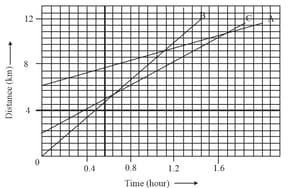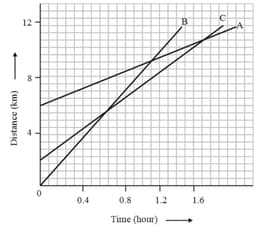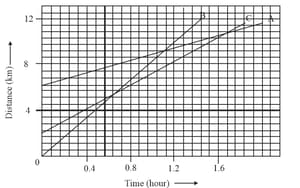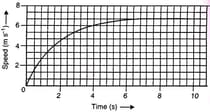NCERT Solutions for Chapter: Motion, Exercise 6: Exercises
NCERT Science Solutions for Exercise - NCERT Solutions for Chapter: Motion, Exercise 6: Exercises
Attempt the practice questions on Chapter 8: Motion, Exercise 6: Exercises with hints and solutions to strengthen your understanding. SCIENCE TEXTBOOK FOR CLASS IX solutions are prepared by Experienced Embibe Experts.
Questions from NCERT Solutions for Chapter: Motion, Exercise 6: Exercises with Hints & Solutions
Joseph jogs from one end A to the other end B of a straight road in and then turns around and jogs back to point C in another . What are Joseph’s average speeds and velocities in jogging from A to C?
Figure shows the distance-time graph of three objects A, B and C. Study the graph and answer the following question:

Are all three ever at the same point on the road?
Figure shows the distance-time graph of three objects A, B and C. Study the graph and answer the following question:

How far has C travelled when B passes A?
Figure shows the distance-time graph of three objects A, B and C. Study the graph and answer the following question:

How far has B travelled by the time it passes C?
The speed-time graph for a car is shown in figure.

Which part of the graph represents the uniform motion of the car?
State which of the following situations are possible and give an example for each of these:
An object moving with an acceleration but with uniform speed.
State if the following situation is possible and if possible give an example.
An object is moving in a certain direction with an acceleration in the perpendicular direction.
An artificial satellite is moving in a circular orbit of radius Calculate its speed if it takes to revolve around the earth?
